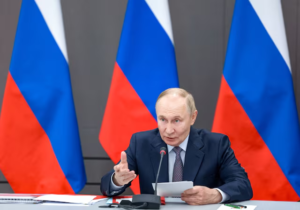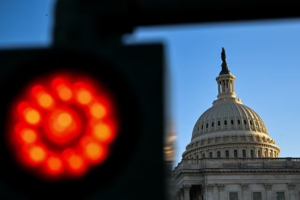The European Union (EU) unveiled a record €11.5 billion ($13.3 billion) package of investment to support South Africa in transitioning to a greener and more resilient economy. The investment, made public on Thursday, will be used for renewable energy projects, the modernization of infrastructure, and the manufacture of pharmaceuticals, the largest EU financial commitment to an African nation in years.
A great deal of the investment is aimed at helping Africa’s most industrialized economy shift away from coal dependence to green and sustainable energy. Projects aimed at renewable power generation, upgrade of the grid network, energy storage facilities, and developing a green hydrogen economy are part of the strategy, which would make South Africa a regional clean energy export hub.
Powering South Africa’s Green Transition
South Africa, on which it is currently relying on coal to produce over 80% of its electricity, has been facing a chronic energy crisis characterized by rolling blackouts, stagnant economic growth, and rising unemployment. The EU investment is under its Global Gateway Initiative, a strategic initiative that seeks to boost sustainable development and counter China’s ever-growing footprint on the continent through its Belt and Road projects.
According to the EU press release, part of the funding will go towards the Coega Green Ammonia Project—a flagship project that aims to meet the growing global demand for green ammonia, a critical ingredient in fertilizers, mining processes, and the production of clean chemicals. The Eastern Cape-based Coega project is expected to create thousands of jobs and enable further private investment, and thus become a foundation of South Africa’s green industrial revolution.

European Commission President Ursula von der Leyen emphasized the partnership’s strategic value, stating that “Europe stands with South Africa as it moves toward a sustainable, inclusive future. Our investments will help unlock green energy potential, strengthen healthcare manufacturing, and drive innovation that benefits the entire continent.”
Strengthening Africa’s Pharmaceutical Autonomy
In addition to energy, the EU funding will also boost the capacity of South Africa to manufacture pharmaceuticals, such as vaccines and biotechnology. This is targeted at building indigenous and regional capacity to manufacture vaccines and strategic medicines for the African market to reduce importation and enhance healthcare resilience on the continent.
South Africa played a key role in the COVID-19 pandemic with the Aspen Pharmacare plant that produced vaccines that were supplied within Africa. The new investment seeks to build on that success by establishing new value chains and regional research partnerships.
Economic and Political Context
The EU investment pledge coincides with the fact that the economy of South Africa is subjected to various challenges, namely, increasing unemployment (well over 32%), decreasing foreign investment, and the effects of recent U.S. trade policy actions.
U.S. President Donald Trump introduced 30% tariffs against South African exports in August, citing trade imbalances and industrial subsidy issues. The move was a severe blow to the country’s export-focused industries, including metals, auto parts, and agricultural produce. The expiration of the impact of a considerable U.S.-Africa trade agreement on September 30 has yet again compounded the intricacy of the country’s export scenario.
South African authorities are currently in talks with Washington to cut or eliminate the tariffs, claiming they risk destabilizing economic stability and regional trade links.
Pretoria has also been trying to woo foreign investors to revive growth via public-private collaborations, energy and mining sector reforms, and incentives for clean technology development.
Continuity or Expansion of Previous Pledges
It is not certain whether the newly announced €11.5 billion investment is in addition to or on top of the €4.7 billion which President von der Leyen committed to in March 2025 when she travelled to South Africa. That earlier commitment was largely for the purposes of guaranteeing the Just Energy Transition Partnership (JETP)—a multilateral coalition of the EU, the U.S., the U.K., and other stakeholders to support South Africa in its decoupling from coal and its net-zero emissions economy by 2050.
Experts interpret this new EU funding as proof of European renewed confidence in South Africa’s long-term energy transformation program and strategic counterweight to both American tariff pressure and China’s increased presence in African infrastructure projects.
Looking Ahead: A New Chapter in EU-Africa Cooperation
The new financing deal is a possible watershed for EU-Africa relations, and it is the latest acknowledgment by Europe of Africa’s role in the global energy transition. The enormous renewable resources—particularly solar, wind, and green hydrogen potential—of South Africa make it set to be a significant supplier to the future clean energy economy.
If managed successfully, the investment would help plug South Africa’s chronic energy gap, unlock industrial diversification, and stimulate job creation in high-tech and green sectors.
However, experts warn that administrative delays, corruption risks, and infrastructure bottlenecks could slow its progress. It will require good governance, cooperation between the state and private sector, and adequate project delivery timelines to function.
Conclusion
The €11.5 billion commitment by the EU is not only a money proposition — it’s a vote of confidence in South Africa’s ability to spearhead Africa’s transition to green. Barring short-term roadblocks presented by U.S. tariffs and internal challenges, this partnership could unlock the door to a more resilient, creative, and greener South African economy and be attuned to global climate and development goals.




